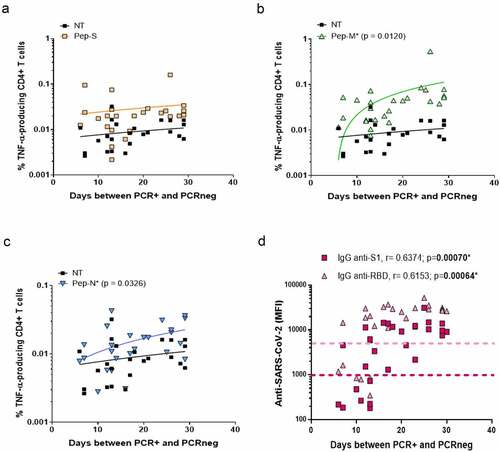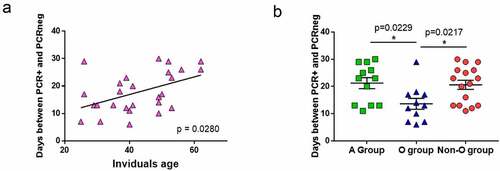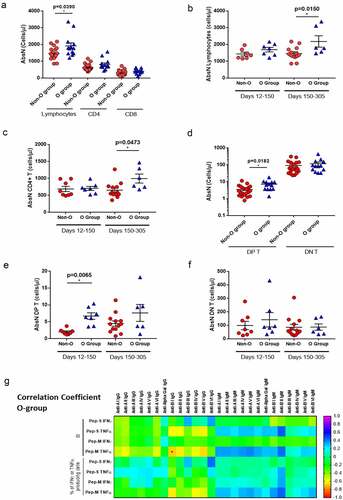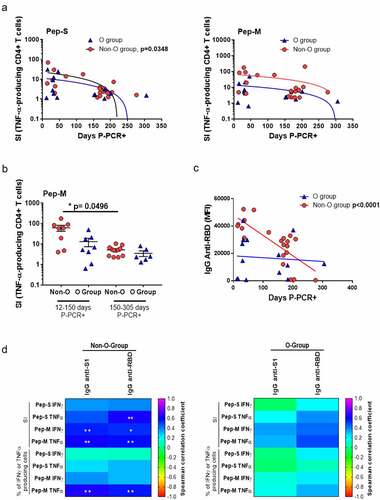Figures & data
Table 1. Demographic and clinical characteristics of the COVID-19 convalescent patients
Figure 1. Gating strategy and specific memory T-cell responses to SARS-CoV-2-derived peptide pools in 35 convalescent patients.

Figure 2. Frequencies of TNF-α-producing cells and time necessary for viral clearance.

Figure 3. Specific CD4+ T-cell response to SARS-CoV-2 peptides at 10 months post-infection.

Figure 4. Age and blood groups as factors for viral clearance.

Figure 5. Blood groups as a factor for immune response.

Figure 6. Blood groups as a factor for specific CD4+ T-cell response.

